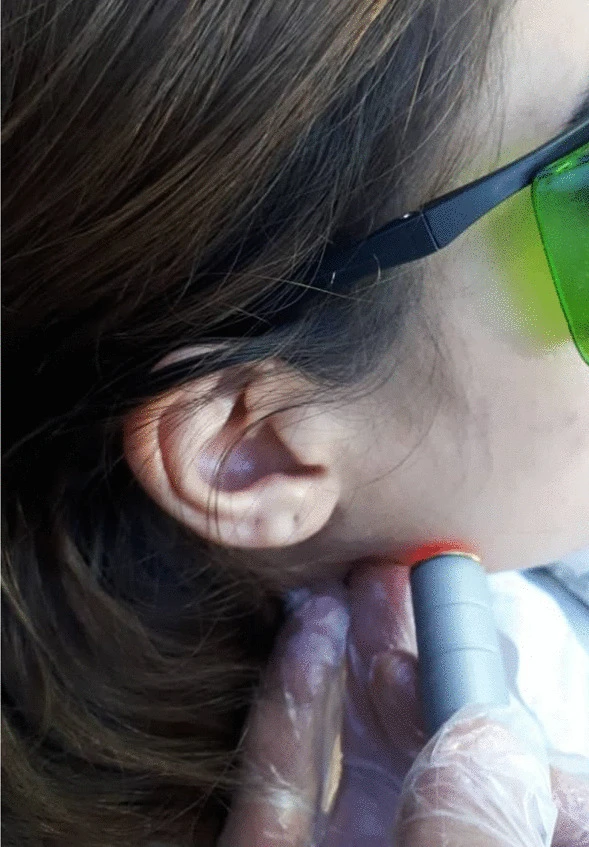An interesting article titled “Extraoral low-level laser therapy can decrease pain but not edema and trismus after surgical extraction of impacted mandibular third molars: a randomized, placebo-controlled clinical trial,” appearing in BMC Oral Health is written by Ehsan Momeni and et. al. (September 20, 2022, Vol. 22, 417). The article seeks to explore the impact of using a low-level diode laser on pain, swelling (edema), and jaw opening (trismus) following surgery to remove impacted lower wisdom teeth. This topic has been covered before on this site see for example the articles Laser Therapy to Reduce Pain and Improve Healing After Tooth Removal and Using Laser Therapy after Tooth Extraction to Improve Wound Healing.
In the article the authors explore laser therapy as a possible alternative to techniques such as medication, cryotherapy, and surgical closure techniques to minizime complications, pain, and swelling after wisdom teeth surgery. In the article the authors conducted a split-mouth, randomized, placebo-controlled clinical trial in 25 healthy adults (14 females and 11 males) with asymptomatic, bilaterally impacted mandibular wisdom teeth. One side of each patient’s jaw was randomly assigned to receive the laser, and the other side did not.
The authors measured swelling by measuring the distance between the patient’s chin point and the inferior border of the external auditory canal was measured. The authors measured jaw opening by measuring the distance between the incisal edges of a patient’s upper and lower right incisors in maximum mouth opening was measured using a calibrated digital caliper before and after surgery and two days and seven days after surgery. A visual analog scale was used to measure pain, and patients were asked to keep a log of their pain scores for seven days and the number of analgesics they took. Patients were given 500 mg amoxicillin every 8 hours for 7 days, 400 mg ibuprofen every 12 hours for thre days, and chlorhexidine mouthwash for seven days.

The authors found that swelling was not statistically signficantly different between the two groups at any point in time. However, in the control group the increase in swelling was slightly more in the first two days. Regarding mouth opening there was not a significant difference between the two groups before or right after surgery. However, mouth opening was greater in the laser group at 2 and 7 days after surgery. Regarding pain, the authors found that the mean pain score was signficantly higher in the control group in the first 7 days. The authors note that the the mean pain score decreased overtime in the two groups and this reduction was significant in the two groups after the second day. The authors state
“The results showed that although pain and edema were lower in the laser group after surgery, this difference was only significant for pain.”
The authors do note several limitations of the study which included that there was a small sample size and there was not diferent laser types and parameters used. The study was limited to a single-session irradiation of 940 nm diode laser and thus the authors feel that this particular laser session after wisdom teeth surgery can help reduce pain.
